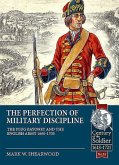Frontier Soldiers of New France examines the official and regulation dress, weapons and equipment of the regular colonial troops maintained by the French government in North America from 1683 to 1760, including unpublished information with a focus on new illustrations, line drawings, and photos of rare portraits and surviving artefacts from public and private collections. This volume is the first of a series of three that will present all the regular forces that served in New France from 1683, when the first permanent garrisons of royal troops arrived, to September 1760. Many North American military campaigns of that era have been, and continue to be, covered in countless history books. The purpose of this work is, however, to be the first to present in detail the organisation and especially the material culture of all military participants, be they generals or private soldiers. There have been some sections of books, usually brief, and articles devoted to organisation, armament, dress, and equipment previously published. The aim of this work is to present a complete record of these aspects. To achieve this goal, three veteran researchers have consulted primary documents preserved in archives and collections on both sides of the Atlantic during the last half century and have united their efforts to produce a wide-ranging and as accurate as possible record. The result is often intriguing and attractive, both in the regulation uniforms worn by officers and soldiers that might be seen by onlookers at frontier forts as far as the known world (to Europeans) or at fortresses such as Québec and Louisbourg. The weapons and equipment were usually somewhat distinctive. They had weapons, clothing and equipment that became specially adapted to North America's wilderness, thanks to their First Nations allies, be it in the primaeval forests crisscrossed by great rivers and lakes or at the great central plains, which will be covered in volume 2. Volume 3 will be devoted to the battalions detached from the French regular metropolitan army commanded, from 1756, by Montcalm who led an arguably heroic resistance against overwhelming British and American forces. They, too, had surprising aspects of material culture; for instance, the battalions that came in 1755 had different uniforms in Canada than their regulation dress in France. The work is illustrated with period paintings and prints, as well as museum-quality artwork by internationally acclaimed military artists lauded for accuracy combined with fine art. Indeed, some works have already graced academic publications and displays in museums and historic sites.








